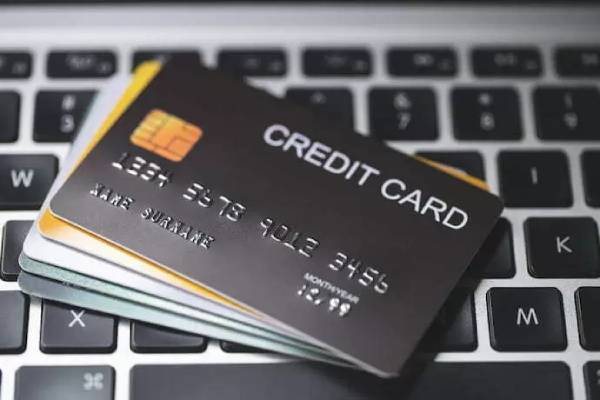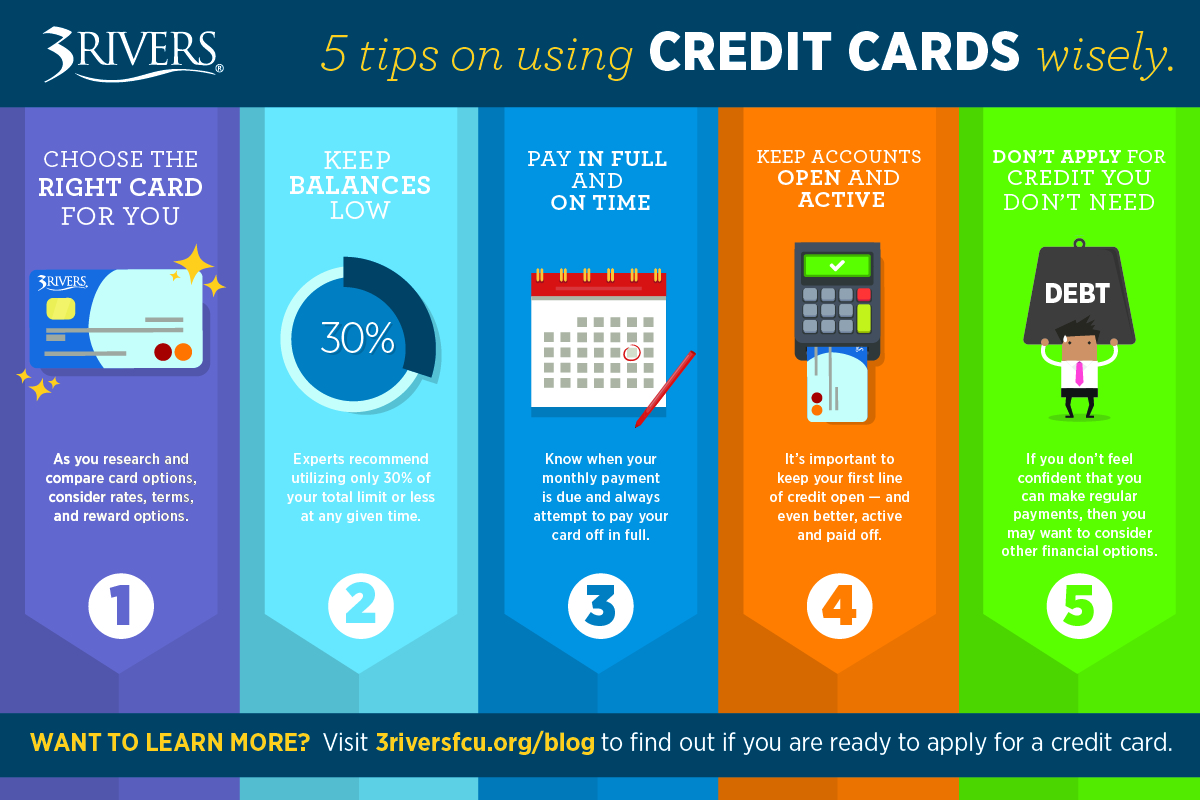Why Credit Cards are a Great Way to Establish or Rebuild Credit
Having good credit is essential for financial stability and security. A good credit score can help individuals qualify for loans, credit cards, and other financial products at favorable interest rates. However, for those with poor or no credit, establishing a positive credit history can be a daunting task. This is where credit cards come in – a valuable tool for building or rebuilding credit. When used responsibly, credit cards can help individuals establish a positive credit history, which can have a significant impact on their financial well-being.
Credit cards offer a convenient and accessible way to demonstrate responsible credit behavior. By making regular payments and keeping credit utilization low, individuals can show lenders that they are capable of managing credit responsibly. This, in turn, can help improve their credit score over time. Additionally, credit cards provide an opportunity to establish a credit mix, which is an essential component of credit scoring models. A diverse credit mix, including credit cards, loans, and other credit products, can help individuals demonstrate their ability to manage different types of credit.
Furthermore, credit cards offer a range of benefits that can help individuals build credit, including rewards programs, purchase protection, and credit score tracking. Many credit cards also offer educational resources and tools to help individuals manage their credit effectively. By taking advantage of these benefits and using credit cards responsibly, individuals can establish a strong credit foundation and improve their financial prospects.
In fact, using credit cards to build credit is a strategy that has been employed by many individuals. By making regular payments and keeping credit utilization low, individuals can demonstrate responsible credit behavior and improve their credit score over time. For example, a person with a poor credit history may apply for a secured credit card and use it to make regular purchases and payments. Over time, their credit score may improve, allowing them to qualify for better credit cards and loans.
Overall, credit cards are a valuable tool for building or rebuilding credit. By using credit cards responsibly and taking advantage of their benefits, individuals can establish a positive credit history and improve their financial prospects. Whether you’re looking to establish credit for the first time or rebuild credit after a setback, credit cards can be a powerful tool in your financial arsenal.
How to Choose the Best Credit Card for Your Credit-Building Needs
When it comes to building credit with credit cards, choosing the right card is crucial. With so many options available, it can be overwhelming to select the best credit card for your credit-building needs. However, by considering a few key factors, you can make an informed decision and set yourself up for success.
First and foremost, consider the interest rate. If you plan to carry a balance, look for a credit card with a low interest rate. This will help minimize the amount of interest you pay over time. Additionally, consider the fees associated with the credit card. Some credit cards come with annual fees, late fees, or foreign transaction fees. Make sure you understand all the fees associated with the card before applying.
Credit limit is another important factor to consider. If you’re building credit, you may want to consider a credit card with a lower credit limit. This will help you avoid overspending and accumulating debt. On the other hand, if you have established credit, you may want to consider a credit card with a higher credit limit to take advantage of rewards programs and other benefits.
Rewards programs are also an important consideration. If you use your credit card for everyday purchases, look for a card with a rewards program that aligns with your spending habits. For example, if you frequently dine out, consider a credit card with a rewards program that offers cashback or points on restaurant purchases.
Some popular credit cards for building credit include the Discover it Secured and the Capital One QuicksilverOne Cash Rewards Credit Card. The Discover it Secured is a great option for those with poor or no credit, as it offers a low interest rate and no annual fee. The Capital One QuicksilverOne Cash Rewards Credit Card is a good option for those with established credit, as it offers unlimited 1.5% cashback on all purchases and a one-time $150 bonus after spending $500 within the first 3 months.
Ultimately, the best credit card for building credit is one that aligns with your financial goals and spending habits. By considering the factors mentioned above and doing your research, you can find a credit card that helps you build credit and achieve financial success.
Understanding Credit Card Terminology: A Beginner’s Guide
When it comes to building credit with credit cards, understanding the terminology is crucial. Credit card terminology can be complex and overwhelming, but it’s essential to grasp the basics to make informed decisions about your credit-building strategy.
One of the most important credit card terms to understand is credit utilization ratio. This refers to the percentage of your available credit limit that you’re using at any given time. For example, if you have a credit limit of $1,000 and you’ve charged $300 to your card, your credit utilization ratio is 30%. Keeping your credit utilization ratio low is essential for building credit, as it shows lenders that you can manage your debt responsibly.
Another key term to understand is credit score. Your credit score is a three-digit number that represents your creditworthiness. It’s calculated based on your payment history, credit utilization ratio, and other factors. A good credit score can help you qualify for better interest rates and terms on credit cards and other loans.
Credit limit is also an important term to understand. This refers to the maximum amount of credit that’s available to you on a particular credit card. For example, if you have a credit card with a credit limit of $1,000, you can charge up to $1,000 on that card. Keeping your credit utilization ratio low is essential for building credit, so it’s essential to choose a credit card with a credit limit that aligns with your spending habits.
Other important credit card terms to understand include APR (annual percentage rate), which refers to the interest rate charged on your credit card balance; fees, which can include annual fees, late fees, and foreign transaction fees; and rewards programs, which can offer cashback, points, or other benefits for using your credit card.
By understanding these key credit card terms, you can make informed decisions about your credit-building strategy and choose the best credit cards to build your credit. Remember, building credit takes time and effort, but with the right tools and knowledge, you can achieve a strong credit profile and enjoy better financial opportunities.
Using Credit Cards Responsibly: Best Practices for Building Credit
Using credit cards responsibly is crucial for building credit. When used correctly, credit cards can help establish a positive credit history and improve credit scores over time. However, when used irresponsibly, credit cards can lead to debt and damage credit scores.
One of the most important best practices for using credit cards responsibly is to make on-time payments. Payment history accounts for 35% of credit scores, so making late payments can significantly damage credit scores. Set up payment reminders or automate payments to ensure that payments are made on time.
Another important best practice is to keep credit utilization low. Credit utilization refers to the percentage of available credit that is being used. Keeping credit utilization low shows lenders that credit is being used responsibly and can help improve credit scores. Aim to keep credit utilization below 30% for all credit cards.
Monitoring credit reports is also essential for building credit. Credit reports contain information about credit history, including payment history, credit utilization, and credit inquiries. Check credit reports regularly to ensure that they are accurate and up-to-date. Dispute any errors or inaccuracies found on credit reports.
Avoiding common pitfalls is also crucial for building credit. One common pitfall is overspending. Avoid using credit cards for discretionary purchases, and instead use them for essential expenses such as groceries or gas. Another common pitfall is accumulating high-interest debt. Avoid using credit cards with high interest rates, and instead opt for credit cards with low interest rates or 0% introductory APRs.
Finally, avoid applying for too many credit cards. Applying for multiple credit cards in a short period of time can damage credit scores and indicate to lenders that credit is being used irresponsibly. Only apply for credit cards that are necessary, and space out applications if multiple credit cards are needed.
By following these best practices, individuals can use credit cards responsibly and build credit over time. Remember, building credit takes time and effort, but with the right strategies and techniques, individuals can establish a strong credit profile and enjoy better financial opportunities.
Secured vs. Unsecured Credit Cards: Which is Best for Building Credit?
When it comes to building credit, there are two main types of credit cards to consider: secured and unsecured. Both types of credit cards can be useful for building credit, but they have some key differences that can affect their suitability for different individuals.
Secured credit cards require a security deposit, which is typically equal to the credit limit. This deposit is used to secure the credit card and reduce the risk for the lender. Secured credit cards are often easier to qualify for than unsecured credit cards, making them a good option for individuals with poor or no credit. However, they often come with higher fees and interest rates than unsecured credit cards.
Unsecured credit cards, on the other hand, do not require a security deposit. They are often more difficult to qualify for than secured credit cards, but they typically offer better terms and conditions. Unsecured credit cards are a good option for individuals with established credit, as they can provide more flexibility and rewards.
So, which type of credit card is best for building credit? The answer depends on your individual circumstances. If you have poor or no credit, a secured credit card may be a good option. These credit cards can provide a way to establish or rebuild credit, and they often come with educational resources and tools to help you manage your credit.
On the other hand, if you have established credit, an unsecured credit card may be a better option. These credit cards often offer more rewards and benefits, and they can provide more flexibility and convenience. However, it’s essential to use unsecured credit cards responsibly and make on-time payments to avoid damaging your credit score.
Ultimately, the best credit card for building credit is one that aligns with your financial goals and credit profile. By considering your options carefully and choosing a credit card that meets your needs, you can use credit cards to build your credit and achieve financial success.
How Long Does it Take to Build Credit with a Credit Card?
Building credit with a credit card takes time and effort, but the exact timeframe can vary depending on several factors. Payment history, credit utilization, and credit age are just a few of the factors that can influence credit score improvements.
Generally, it can take several months to a year or more to see significant improvements in credit scores when using credit cards to build credit. This is because credit scores are based on a complex algorithm that takes into account a range of factors, including payment history, credit utilization, and credit age.
One of the most important factors in building credit with a credit card is payment history. Making on-time payments is crucial for establishing a positive payment history, which can help improve credit scores over time. In fact, payment history accounts for 35% of credit scores, making it one of the most important factors in determining creditworthiness.
Credit utilization is another important factor in building credit with a credit card. Keeping credit utilization low can help improve credit scores by showing lenders that credit is being used responsibly. Aim to keep credit utilization below 30% for all credit cards to maximize the benefits of credit card use.
Credit age is also an important factor in building credit with a credit card. A longer credit history can help improve credit scores by showing lenders that credit has been used responsibly over time. This is why it’s essential to keep old accounts open and in good standing, even if they’re not being used regularly.
By using credit cards responsibly and making on-time payments, individuals can see significant improvements in credit scores over time. For example, someone with a poor credit score of 500 may be able to improve their score to 650 or higher within a year or two of using credit cards responsibly.
Ultimately, the timeframe for building credit with a credit card will vary depending on individual circumstances. However, by using credit cards responsibly and making on-time payments, individuals can establish a strong credit profile and enjoy better financial opportunities.
Common Mistakes to Avoid When Using Credit Cards to Build Credit
When using credit cards to build your credit, it’s essential to be aware of common pitfalls that can hinder your progress. By avoiding these mistakes, you can ensure that you’re using credit cards effectively to establish or rebuild your credit. Here are some common errors to watch out for:
Applying for too many credit cards can negatively impact your credit score. Each application can result in a hard inquiry, which can temporarily lower your credit score. Additionally, having too many credit cards can lead to overspending and debt accumulation. It’s recommended to apply for one or two credit cards at a time and space out your applications if you need to apply for multiple cards.
Missing payments is a significant mistake that can damage your credit score. Payment history accounts for 35% of your credit score, so making timely payments is crucial. Set up payment reminders or automate your payments to ensure you never miss a payment. Late payments can result in late fees, interest rate increases, and negative marks on your credit report.
Accumulating high-interest debt is another common mistake. High-interest debt can lead to a cycle of debt that’s challenging to escape. To avoid this, make sure to pay your balance in full each month or make more than the minimum payment. If you need to carry a balance, consider a credit card with a 0% introductory APR or a low ongoing APR.
Not monitoring your credit report is a mistake that can cost you. Errors on your credit report can negatively impact your credit score. Obtain a free credit report from each of the three major credit bureaus (Experian, TransUnion, and Equifax) and review it for errors. Dispute any inaccuracies you find and work to resolve them as quickly as possible.
Not keeping credit utilization low is another mistake. Credit utilization accounts for 30% of your credit score, so keeping your credit utilization ratio low is essential. Aim to keep your credit utilization ratio below 30% for all credit cards and revolving accounts. This will show lenders that you can manage your debt responsibly.
By avoiding these common mistakes, you can use credit cards to build your credit effectively. Remember to apply for credit cards responsibly, make timely payments, keep credit utilization low, and monitor your credit report. With time and responsible credit card use, you can establish or rebuild your credit and enjoy better financial opportunities.
Monitoring Your Progress: How to Track Your Credit-Building Success
When using credit cards to build your credit, it’s essential to monitor your progress regularly. Tracking your credit-building success helps you stay on track, identify areas for improvement, and make adjustments to your strategy as needed. Here’s how to obtain and interpret your credit reports and scores:
Obtaining Free Credit Reports and Scores
You can obtain a free credit report from each of the three major credit bureaus (Experian, TransUnion, and Equifax) once a year from AnnualCreditReport.com. You can also obtain a free credit score from various websites, such as Credit Karma, Credit Sesame, or through the website of your credit card issuer.
Interpreting Your Credit Report
Your credit report contains information about your credit history, including payment history, credit utilization, and credit inquiries. Review your report carefully to ensure it’s accurate and up-to-date. Check for errors, such as incorrect payment history or accounts that don’t belong to you. Dispute any errors you find and work to resolve them as quickly as possible.
Understanding Your Credit Score
Your credit score is a three-digit number that represents your creditworthiness. It’s based on information in your credit report and is used by lenders to determine your credit risk. A good credit score can help you qualify for better interest rates and terms on credit cards and loans. Aim for a credit score of 700 or higher, which is considered good credit.
Tracking Your Credit Utilization Ratio
Your credit utilization ratio is the percentage of your available credit that you’re using. Keep this ratio low, ideally below 30%, to show lenders you can manage your debt responsibly. Monitor your credit utilization ratio regularly and adjust your spending habits as needed to keep it in check.
Adjusting Your Credit-Building Strategy
Based on your credit report and score, you may need to adjust your credit-building strategy. If you’re not seeing the progress you expect, consider making changes to your payment habits, credit utilization, or credit mix. By monitoring your progress and making adjustments as needed, you can stay on track with your credit-building goals and achieve good credit over time.
Using Credit Cards to Build Your Credit Requires Ongoing Monitoring
Building credit with credit cards requires ongoing monitoring and maintenance. By tracking your progress regularly and making adjustments as needed, you can ensure you’re using credit cards effectively to build your credit. Remember to obtain free credit reports and scores, interpret your credit report and score, track your credit utilization ratio, and adjust your credit-building strategy as needed to achieve good credit over time.







